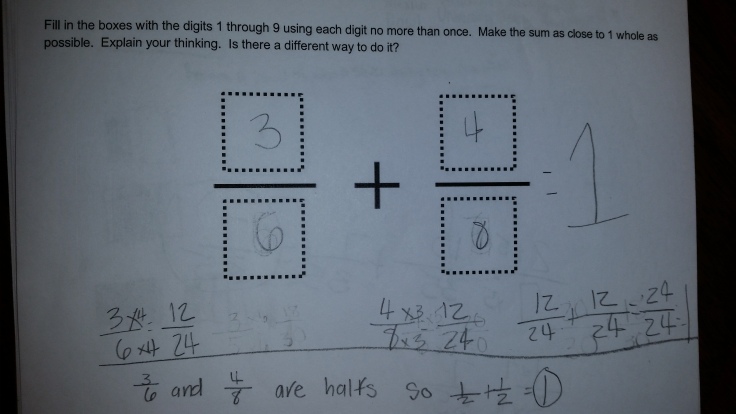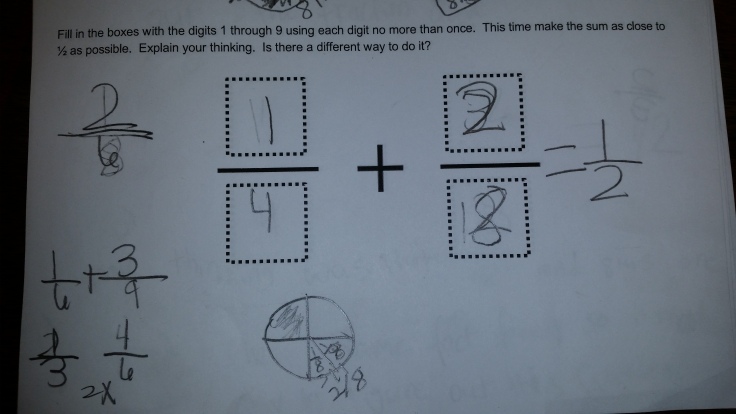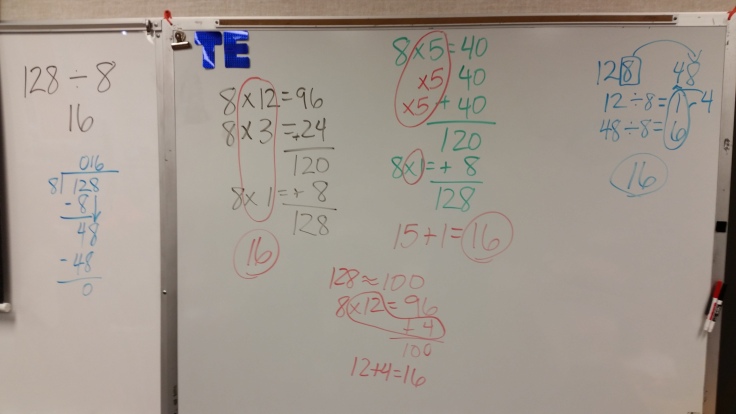If you’re not open minded about your math instruction, then you’ll probably never be open middled either.
You’ve heard of open ended questions and problems, but have you heard of open middle?
Me neither . . . until now! I didn’t really get it at first, but I always like to try new things that might benefit my students, so . . .
Back in December I used this “Sum of Fractions” problem from the Open Middle website with my students:

It was surprisingly easy for most of the students. Only the students who are working below grade level struggled with it much, and even then, with a fraction circle kit they were able to figure it out with out too much difficulty.
Here’s how another student solved it in my afternoon class:

Did you notice what I added to the instructions to try to open it up a little more?
This might seem like a good thing, and in one sense it was. I was glad to see that so many of my students had developed their understanding of fractions to a level that made this “challenge” not much of one. However, this meant that the problem was with the problem, and I’d have to do some more work to add some more complexity.
As we shared different ways to solve this problem almost every student came up with two fractions that equaled 1/2. A couple students in my afternoon class did come up with different ways to make 1 whole without using just halves, so the extra prompt I added did bear some fruit.
So next we tried this:

This provided a little more challenge, but many of the students thought about cutting the half into fourths and finding fractions that would be equivalent. The extra question prompting the students to examine other possible solutions produced some students thinking about combinations of thirds, sixths, and ninths.
The best way I know how to describe what “open middle” really means is that there is a common entry point for the problem (beginning) and there are actual solutions (ending), but the path or process students use (middle), is open!
Overall it provided some great discussion about fractions and constraints in a problem situation. It was also good for students who normally know the answer to math problems without having to think much. They at least had to try out a few different combinations before they found something that worked, and then they got to search out other possible solutions.
I will definitely use the open middle concept again! The challenge for me is to design the problem with just the right amount of challenge, but I guess that is really the point of any good lesson. In the constant quest to assess our students’ thinking this is a great way to get some insight into what they really know and understand. I also love how it supplies opportunity for different ways to reach a solution.
Here’s the website if you want to look at some more examples:

Recent Comments